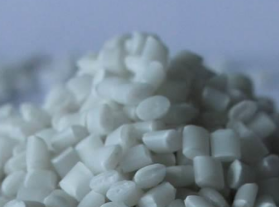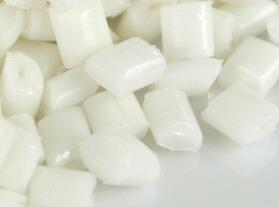Polyethylene is one of the most widely used thermoplastics in the world and can be found in everything from grocery bags to children’s toys to shampoo bottles. It can be categorized into several subcategories based on its molecular structure, each of which demonstrates unique characteristics that make it suitable for use in particular applications. The most common types of polyethylene are:
· Low-density polyethylene (LDPE). This clear or translucent plastic exhibits flexibility, chemical resistance, and waterproofing capabilities. It is used in the manufacture of a wide range of products, including grocery bags, plastic wrap and film, flexible packaging material, and injection molded parts.
· High-density polyethylene (HDPE). HDPE offers greater rigidity and durability than LDPE. It is available in translucent to opaque variation and displays excellent chemical resistance. Products made from HDPE include rigid packaging containers, toys, outdoor furniture and structures, kitchen equipment, and plumbing pipes.
| |
 Similarities Between LDPE and HDPE Similarities Between LDPE and HDPE
Since they are fundamentally composed of the same polymerized ethylene molecules, LDPE and HDPE share many characteristics. For example, both materials exhibit the following properties:
· Low material weight · Tensile strength ranging from 0.20 to 0.40 N/mm2 · High impact strength · Resistance to chemicals, water vapor, and weathering · High recyclability · Low cost of manufacture and fabrication
When employed in injection molding operations, both materials also demonstrate the following:
· Melt temperatures of 180 ̊ to 280 ̊ C (355 ̊ to 535 ̊ F) · Fast injection speeds · Drying of finished part not necessary
The similarities in the above characteristics, among others, make LDPE and HDPE suited to similar applications. Some of the industries that commonly use both materials include:
· Automotive · Electrical · Hydraulics and pneumatics · Packaging · Pipe and piping
| |
| |
 Differences Between LDPE and HDPE Differences Between LDPE and HDPE
While LDPE and HDPE share many characteristics, their fundamentally different internal compositions result in many differences as well. The polymer chains that make up both materials are branched in LDPE, whereas, in HDPE, the polymers have a more crystalline structure. This difference in polymer organization leads to distinct characteristics in each material.
Differences in Physical Characteristics
LDPE is softer and more flexible than HDPE. It also has a lower melting point (115° C) and is more transparent. Compared to HDPE, it is more likely to crack under stress. HDPE is rigid and durable and offers greater chemical resistance. Its higher melting point (135° C) allows it to withstand higher temperatures than LDPE. Its more crystalline structure also results in greater strength and opacity of the material.
Differences in Recyclability
Both LDPE and HDPE are recyclable; however, they must be recycled separately. LDPE is classified under recycling number 4, and HDPE under recycling number 2. Depending on the product, LDPE can also be more difficult to recycle as it is softer and can get caught in recycling machinery. HDPE is easier to transport and run through recycling equipment.
Differences in Production Methods
LDPE is produced by compressing monomer ethylene gas in an autoclave or tubular reactor to facilitate polymerization—i.e., the linking of monomers into polymer chains. HDPE is created by heating petroleum to very high temperatures. This process releases the ethylene gas monomers, which then combine to form polymer chains. | |













